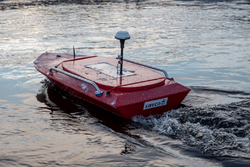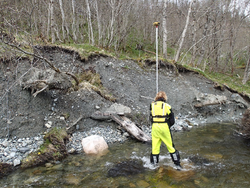Global navigation satellite system (GNSS)
Contents
Quick summary
Developed by: USA, EU, China, Russia
Date:
Type: Methods
Suitable for the following Devices: Lidar, Particle image velocimetry (PIV), Acoustic Doppler current profiler (ADCP),
Introduction
Global navigation satellite system (GNSS) is a general term describing any satellite constellation that provides positioning, navigation, and timing (PNT) services on a global or regional basis. While GPS is the most prevalent GNSS, other nations have provided their own systems to provide complementary, independent PNT capability. GPS is often used as a synonym for all of the different systems (Table 1).
|
System |
BeiDou |
Galileo |
GLONASS |
GPS |
|
Owner |
China |
European Union |
Russia |
United States |
|
Coverage |
Regional, global by 2020 |
Global by 2020 |
Global |
Global |
|
Status |
Basic service by 2018, to be complete by H1 2020 |
Operating since 2016, 2020 completion |
Operational |
Operational |
|
Precision |
10 (public) 0.1m (encrypted) |
1m (public) 0.01m (encrypted) |
4.5m - 7.4m |
15m (no DGPS or WAAS) |
Application
GNSS systems are used to georeferenced measurements. It is coupled with other systems, such as ADCP, Drones, devices for monitoring fish migration, and other devices where the exact location is nessary.
It is important to be aware of the accuracy of the GNSS data and if it fits the measurement requirements. For bathymetry measurements in small rivers and for analyses of low discharges it is recommended to have high accuracy, while a lower accuracy could be sufficient for bathymetry of large water bodies or measurements of high discharges.
There are mainly three different types of GNSS accuracy:
- Standard, such as in cell phones and car navigation. The accuracy is within 3-5 m horizontally and 5-20 m vertically. These systems don’t receive any correction signal.
- Advanced receivers, usually referred to as “differential GPS”. These are used in most scientific instruments. The accuracy is below 1 m horizontally and 2 m vertically.
- RTK-GPS need an internet connection or a local base station to receive a correction signal. This usually is a real time signal (RTK = Real Time Kinematic), but it is also possible to get the correction for post processing. Typical accuracy for the obtained position is in the range of 1 to 3 cm.
Other information
General accuracy is depending on
- Number of satellites / selective availability
- Angle between the satellites = Dilution of Precision (DOP)
- Reflection from buildings/obstacles = multipath error
- Atmospheric conditions
Only the last point, the atmospheric conditions, can be corrected with the differential and RTK GPS.
Relevant literature
- https://en.wikipedia.org/wiki/Satellite_navigation
- https://eos-gnss.com/elevation-for-beginners
- https://www.e-education.psu.edu/geog862/node/1828
- https://gisgeography.com/gps-accuracy-hdop-pdop-gdop-multipath/

